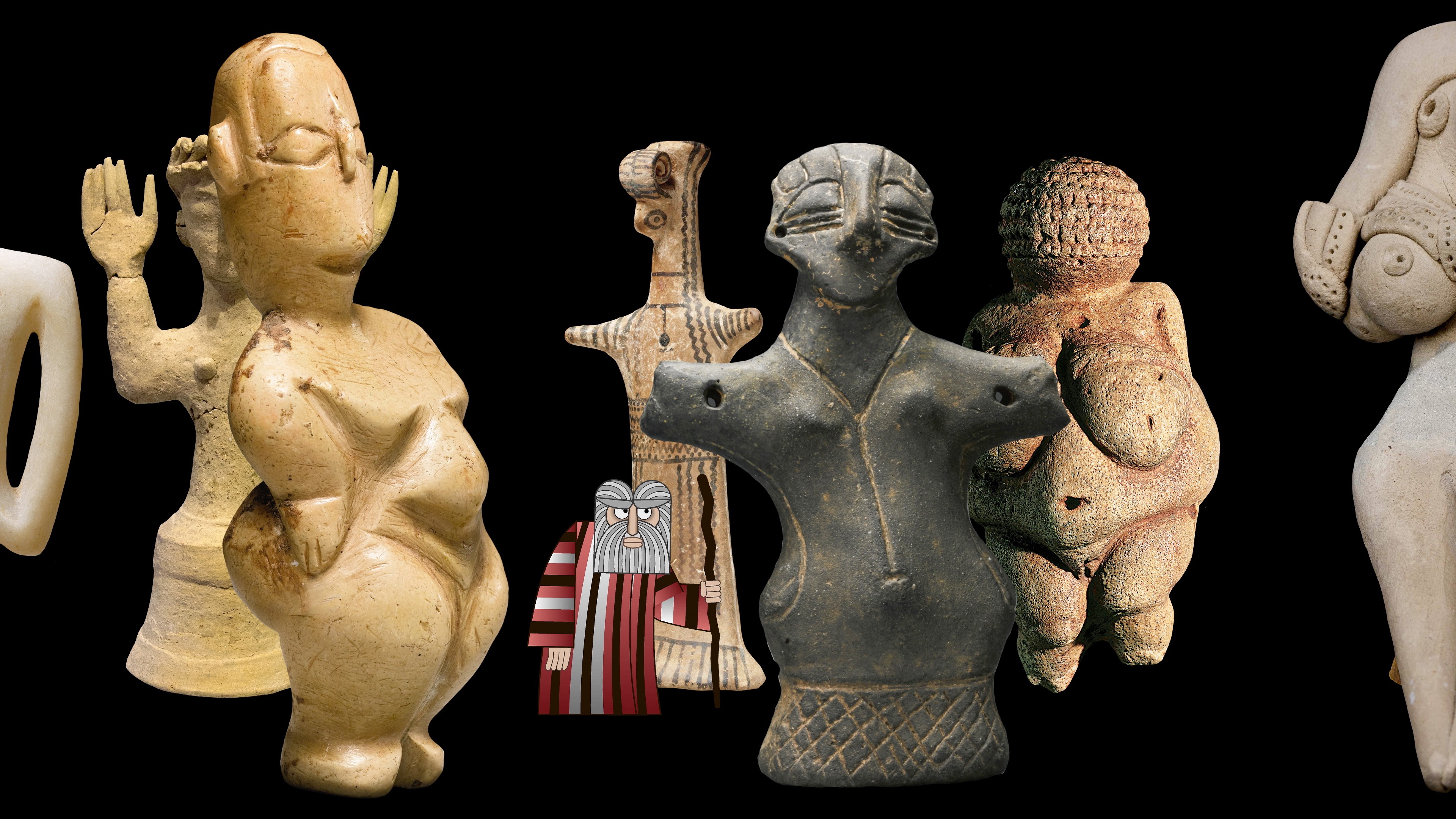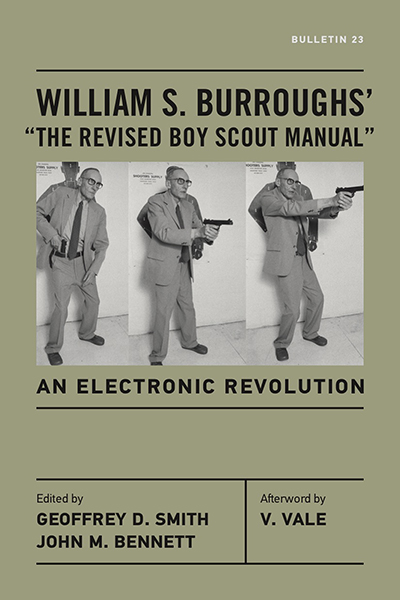[Most Recent Entries] [Calendar View]
Monday, March 25th, 2019
- Week 1 – First Draft of History: How a Free Press Protects Freedom; Part One, Part Two
- Week 2 – Power to the People: Holding the Powerful Accountable; Part One, Part Two
- Week 3 – Picking Sides? How Journalists Cover Bias, Intolerance and Injustice; Part One, Part Two
- Week 4 – The Last Stand of Local News; Part One, Part Two
- Week 5 – The Misinformation Society; Part One, Part Two
- Hannah Allam, national reporter, BuzzFeed News
- Roman Anin, investigations editor, Novaya Gazeta, Moscow
- Hugo Balta, president, National Association of Hispanic Journalists
- Sally Buzbee, executive editor, Associated Press (AP)
- Neil Chase, executive editor, San Jose Mercury News
- Audrey Cooper, editor-in-chief, San Francisco Chronicle
- Jenée Desmond-Harris, staff editor, NYT Opinion, New York Times
- Jiquanda Johnson, founder and publisher, Flint Beat
- Joel Konopo, managing partner, INK Centre for Investigative Journalism, Gaborone, Botswana
- Richard Lui, anchor, MSNBC and NBC News
- Geraldine Moriba, former vice president for diversity and inclusion, CNN
- Bryan Pollard, president, Native American Journalists Association
- Cecile Prieur, deputy editor, Le Monde, Paris
- Joel Simon, executive director, Committee to Protect Journalists
- Alex Stamos, former Facebook chief security officer
- Marina Walker Guevara, winner of the 2017 Pulitzer Prize for Explanatory Reporting for coordinating the Panama Papers investigation
| Time | Event |
| 2:00p | Watch Seder-Masochism, Nina Paley’s Animated, Feminist Take on the Passover Holiday: It’s Free and in the Public Domain
Seder-Masochism, copyright abolitionist Nina Paley’s latest animated release, is guaranteed to ruffle feathers in certain quarters, though the last laugh belongs to this trickster artist, who shares writing credit with ”God, Moses or a series of patriarchal males, depending on who you ask.” Bypassing a commercial release in favor of the public domain goes a long way toward inoculating the film and its creator against expensive rights issues that could arise from the star-studded soundtrack. It also lets the air out of any affronted parties’ campaigns for mass box office boycotts. “The criticism seems equally divided between people that say I’m a Zionist and people that say I’m an anti-Zionist,” Paley says of This Land Is Mine, below, a stunning sequence of tribal and inter-tribal carnage, memorably set to Ernest Gold’s theme for the 1960 epic Paul Newman vehicle, Exodus.
Released as a stand-alone short, This Land Is Mine has become the most viewed of Paley’s works. She finds the opposing camps’ equal outcry encouraging, proof that she’s doing “something right.” More bothersome has been University of Illinois Associate Professor of Gender Studies Mimi Thi Nguyen’s social media push to brand the filmmaker as transphobic. (Paley, no fan of identity politics, states that her “crime was, months earlier, sharing on Facebook the following lyric: 'If a person has a penis he’s a man.'”) Nguyen’s actions resulted in the feminist film’s ouster from several venues and festivals, including Ebertfest in Paley’s hometown and a women’s film festival in Belgium. What would the ancient fertility goddesses populating both art history and Seder-Masochism have to say about that development?
In Seder-Masochism, these goddess figures, whom Paley earlier transformed into a series of free downloadable GIFs, offer a mostly silent rebuke to those who refuse to acknowledge any conception of the divine existing outside patriarchal tradition. In the case of Assistant Professor Nguyen, perhaps the goddesses would err on the side of diplomacy (and the First Amendment), framing the dust-up as just one more reason the public should be glad the project's lodged in the public domain. Anyone with access to the Internet and a desire to see the film will have the opportunity to do so. Called out, maybe. Shut down, never. The goddesses supply a depth of meaning to this largely comic undertaking. Their ample curves inform many of the patterns that give motion to the animated cutouts. Paley also gets a lot of mileage from replicating supernumerary characters until they march with ant-like purpose or bedazzle in Busby Berkeley-style spectacles. Not since Paul Mazursky’s Tempest have goats loomed so large in cinematic choreography… Paley’s use of music is another source of abiding pleasure. She casts a wide net—punk, disco, Bulgarian folk, the Beatles, Free to Be You and Me—again, framing her choices as parody. "Hail, Hail, the Gang’s All Here" accompanies the seventh plague of Egypt (don’t bother looking it up. It’s hail.) Ringo Starr’s famous "Helter Skelter" aside (“I’ve got blisters on my fingers!”) boils down to an apt choice for plague number six. (If you have to think about it…) The elements of the Seder plate are listed to the strains of "Tijuana Taxi" because… well, who doesn’t love Herb Alpert and the Tijuana Brass?
Paley’s own religious background is of obvious interest here, and as with her previous feature, Sita Sings the Blues—also in the public domain—the autobiographical element is irresistible. A 2011 audio recording provides the excuse to portray her father, Hiram, who died the year after the interview was conducted, as a Monty Python-esque God. The senior Paley was raised in an observant Jewish household, but lost faith as a young man. An atheist who wanted his children to know something of their heritage, Passover was the one Jewish holiday he continued to celebrate. (He also forbade the kids from participating in any sort of secular Christmas activities.) A wistful God with the complexion of a dollar bill, Hiram is at times surrounded by putti, in the form of his parents, his contentious Uncle Herschel, and his own sweet younger self. For these scenes, Paley portrays herself as a spirited “sacrificial goat.” This character finds an echo at film’s end, when “Chad Gadya,” the traditional Passover tune that brings the annual seder to a rollicking conclusion, is brought to life using embroidermation, a form Paley may or may not have invented.
Perhaps Paley’s most subversive joke is choosing Jesus, as depicted in Juan de Juanes’ 1652 painting, The Last Supper, to deliver an educational blow-by-blow of Passover ritual. Actually, much like Audrey Hepburn in My Fair Lady and Natalie Wood in West Side Story, Jesus was ghost-voiced by another performer—Barry Gray, narrator of the midcentury educational recording The Moishe Oysher Seder. As you may have gleaned, Paley, despite the clean elegance of her animated line, is a maximalist. There’s something for everyone (excepting, of course, Mimi Thi Nguyen)—a gleaming golden idol, a ball bouncing above hieroglyphic lyrics, actual footage of atrocities committed in a state of religious fervor, Moses’ brother Aaron—a figure who’s often shoved to the sidelines, if not left outright on the cutting room floor. We leave you with Paley’s prayer to her Muse, found freely shared on her website: Our Idea Which art in the Ether That cannot be named; Thy Vision come Thy Will be done On Earth, as it is in Abstraction. Give us this day our daily Spark And forgive us our criticisms As we forgive those who critique against us; And lead us not into stagnation But deliver us from Ego; For Thine is the Vision And the Power And the Glory forever. Amen. Watch Seder-Masochism in its entirety up top, or download it here. Purchase the companion book here. Related Content: Sita Sings the Blues Now on YouTube Watch Nina Paley’s “Embroidermation,” a New, Stunningly Labor-Intensive Form of Animation Introduction to the Old Testament: A Free Yale Course Ayun Halliday is an author, illustrator, theater maker and Chief Primatologist of the East Village Inky zine. Join her in New York City for the next installment of her book-based variety show, Necromancers of the Public Domain, this April. Follow her @AyunHalliday. Watch Seder-Masochism, Nina Paley’s Animated, Feminist Take on the Passover Holiday: It’s Free and in the Public Domain is a post from: Open Culture. Follow us on Facebook, Twitter, and Google Plus, or get our Daily Email. And don't miss our big collections of Free Online Courses, Free Online Movies, Free eBooks, Free Audio Books, Free Foreign Language Lessons, and MOOCs. |
| 5:15p | Journalism Under Siege: A Free Course from Stanford Explores the Imperiled Freedom of the Press This past fall, Stanford Continuing Studies and the John S. Knight Journalism Fellowships teamed up to offer an important course on the challenges facing journalism and the freedom of the press. Called Journalism Under Siege? Truth and Trust in a Time of Turmoil, the five-week course featured 28 journalists and media experts, all offering insights on the emerging challenges facing the media across the United States and the wider world. The lectures/presentations are now all online. Find them below, along with the list of guest speakers, which includes Alex Stamos who blew the whistle on Russia's manipulation of the Facebook platform during the 2016 election. Journalism Under Siege will be added to our collection, 1,300 Free Online Courses from Top Universities. Weekly Sessions: Guest Speakers:
Follow Open Culture on Facebook and Twitter and share intelligent media with your friends. Or better yet, sign up for our daily email and get a daily dose of Open Culture in your inbox. If you'd like to support Open Culture and our mission, please consider making a donation to our site. It's hard to rely 100% on ads, and your contributions will help us provide the best free cultural and educational materials. Journalism Under Siege: A Free Course from Stanford Explores the Imperiled Freedom of the Press is a post from: Open Culture. Follow us on Facebook, Twitter, and Google Plus, or get our Daily Email. And don't miss our big collections of Free Online Courses, Free Online Movies, Free eBooks, Free Audio Books, Free Foreign Language Lessons, and MOOCs. |
| 5:53p | The Sax Solo on Gerry Rafferty’s “Baker Street” on a 10 Hour, Endless Loop Enjoy, but the rule is once you start, you have to listen through to the very, very end. :) The Sax Solo on Gerry Rafferty’s “Baker Street” on a 10 Hour, Endless Loop is a post from: Open Culture. Follow us on Facebook, Twitter, and Google Plus, or get our Daily Email. And don't miss our big collections of Free Online Courses, Free Online Movies, Free eBooks, Free Audio Books, Free Foreign Language Lessons, and MOOCs. |
| 7:00p | Does Playing Music for Cheese During the Aging Process Change Its Flavor? Researchers Find That Hip Hop Makes It Smellier, and Zeppelin’s “Stairway to Heaven” Makes It Milder Humans began making cheese seven millennia ago: plenty of time to develop an enormous variety of textures, flavors, and smells, and certainly more than enough to get creative about the methods of generating even greater variety. But it seems to have taken all that time for us to come around to the potential of music as a flavoring agent. "Exposing cheese to round-the-clock music could give it more flavor and hip hop might be better than Mozart," report Reuters' Denis Balibouse and Cecile Mantovani, citing the findings of Cheese in Sound, a recent study by Swiss cheesemaker Bert Wampfler and researchers at Bern University of the Arts. "Nine wheels of Emmental cheese weighing 10 kilos (22 pounds) each were placed in wooden crates last September to test the impact of music on flavor and aroma," write Balibouse and Mantovani. The hip hop cheese heard A Tribe Called Quest's "Jazz (We've Got)," the classical cheese Mozart's "Magic Flute," the rock cheese Led Zeppelin's "Stairway to Heaven," and so on. Three other wheels heard simple low, medium, and high sonic frequencies, and one control cheese heard nothing at all. But perhaps "heard" is the wrong word: each maturing cheese received its music not through speakers but "mini transmitters to conduct the energy of the music into the cheese." That may make more plausible the results that came out when a culinary jury performed a blind taste test of all the cheeses and found that they really did come out with different flavors. According to the project's press release, a "sensory consensus analysis carried out by food technologists from the ZHAW Zurich University of Applied Sciences" concluded that "the cheeses exposed to music had a generally mild flavor compared to the control test sample" and that "the cheese exposed to hip hop music displayed a discernibly stronger smell and stronger, fruitier taste than the other samples."
Or, as Smithsonian.com's Jason Daley summarizes the findings, A Tribe Called Quest "gave the cheese an especially funky flavor, while cheese that rocked out to Led Zeppelin or relaxed with Mozart had milder tests." Cheese-lovers intrigued by the possibilities implied here would be forgiven for thinking it all still sounds a bit too much like those CD sets that claimed a baby's intelligence could be increased by playing them Mozart in the womb. But if Cheese in Sound's results hold up to further scrutiny, maybe those parents — at least those parents hoping for a funkier child — should have been playing them hip hop all along. Related Content: An Animated History of Cheese: 10,000 Years in Under Six Minutes How to Break Open a Big Wheel of Parmesan Cheese: A Delightful, 15-Minute Primer Music in the Brain: Scientists Finally Reveal the Parts of Our Brain That Are Dedicated to Music Stephen Fry Hosts “The Science of Opera,” a Discussion of How Music Moves Us Physically to Tears Leo Tolstoy’s Family Recipe for Mac ‘N’ Cheese Enter the The Cornell Hip Hop Archive: A Vast Digital Collection of Hip Hop Photos, Posters & More Based in Seoul, Colin Marshall writes and broadcasts on cities, language, and culture. His projects include the book The Stateless City: a Walk through 21st-Century Los Angeles and the video series The City in Cinema. Follow him on Twitter at @colinmarshall or on Facebook. Does Playing Music for Cheese During the Aging Process Change Its Flavor? Researchers Find That Hip Hop Makes It Smellier, and Zeppelin’s “Stairway to Heaven” Makes It Milder is a post from: Open Culture. Follow us on Facebook, Twitter, and Google Plus, or get our Daily Email. And don't miss our big collections of Free Online Courses, Free Online Movies, Free eBooks, Free Audio Books, Free Foreign Language Lessons, and MOOCs. |
| 8:00p | William S. Burroughs’ Manifesto for Overthrowing a Corrupt Government with Fake News and Other Prophetic Methods: It’s Now Published for the First Time
The Boy Scouts of America have faced some deserved criticism, undeserved ridicule, and have been cruelly used as props, but I think it’s safe to say that they still bear a pretty wholesome image for a majority of Americans. That was probably no less the case and perhaps a good deal more so in 1969, but the end of the sixties was not by any stretch a simpler time. It was a period, writes Scott McLemee, “when the My Lai Massacre, the Manson Family and the Weather Underground were all in the news.” The Zodiac Killer was on the loose, a general air of bleakness prevailed. William S. Burroughs responded to this madness with a counter-madness of his own in "The Revised Boy Scout Manual," “an impassioned yet sometimes incoherent rebuke to ossified political ideologies,” writes Kirkus. We can presume Burroughs meant his instructions for overthrowing corrupt governments to satirically comment on the outdoorsy status quo youth cult. But we can also see the manual taking as its starting point certain values the Scouts champion, at their best: obsessive attention to detail, MacGyver-like ingenuity, and good old American self-reliance. Want to bring down the government? You can do it yourself… with fake news. Boing Boing quotes a long passage from the book that shows Burroughs as a comprehensive, if not quite wholesome, Scout advisor, describing how one might use mass media’s methods to disrupt its message, and to transmit messages of your own. We might think he is foreseeing, even recommending, techniques we now see used to a no-longer-shocking degree.
We might read in Burroughs’ instructions the methods of YouTube propagandists, social media manipulators, and some of the most powerful people in the world. Burroughs does not recommend taking over the media apparatus by seizing its power, but rather using technology to make “cutup video tapes” and ham radio broadcasts featuring documentary media spliced together with fabrications. These “techniques could swamp the mass media with total illusion,” he writes. “It will be seen that the falsifications in syllabic Western languages are in point of fact actual virus mechanisms.” Burroughs is not simply writing a reference for making fearmongering propaganda. Even when it comes to the subject of fear, he sometimes sounds as if he is revising Sergei Eisenstein’s montage theory for his own similarly violent times. “Let us say the message is fear. For this we take all the past fear shots of the subject we can collect or evoke. We cut these in with fear words and pictures, with threats, etc. This is all acted out and would be upsetting enough in any case. Now let’s try it scrambled and see if we get an even stronger effect.” What would this effect be? One “comparable to post-hypnotic suggestion”? Who is the audience, and would they be, a la Clockwork Orange, a captive one? Did Burroughs see people on street corners screening their cut-up videos, despite the fact that consumer-level video technology did not yet exist? Is this a cinematic experiment, mass media-age occult ritual, compendium of practical magic for insider media adepts? See what you can make of Burroughs’ "The Revised Boy Scout Manual" (subtitled “an electronic revolution”). The book has been reissued by the Ohio State Press, with an afterword (read it here) by V. Vale, publisher of the legendary, radical magazine RE/Search, who excerpted a part of the “Revised Manual” in the early 1980s and planned to publish it in full before “a personal relationship blowup” put an end to the project. McLemee titles his review of Burrough’s rediscovered manifesto “Distant Early Warning,” and much of it does indeed sound eerily prophetic. But we should also bear in mind the book is itself a countercultural pastiche, designed to scramble minds for reasons only Burroughs truly knew. He was a “practicing Scientologist at the time” of the book’s composition, “albeit not for much longer,” and he does prescribe use of the e-meter and makes scattered references to L. Ron Hubbard. But as a practitioner of his own precepts, Burroughs would not have written a monograph uncritically promoting one belief system or another. (Well, maybe just the once.) He also quotes Hassan-I Sabbah, discusses Mayan hieroglyphics, and talks General Semantics. "The Revised Boy Scout Manual" “has elements of libertarian manifesto, paramilitary handbook, revenge fantasy and dark satire,” McLemee writes, “and wherever the line between fiction and nonfiction may be, it’s never clear for long.” In this, Burroughs only scrambles elements already in abundance at the end of the sixties and in the early seventies, during which he revised and recorded the work several times as he transitioned himself out of an organization that maintained total control through mass media. Like Marshall McLuhan, Noam Chomsky and others, he was beginning to see this phenomenon everywhere he looked. Burroughs' most lasting influence may be that, like the late-60s Situationists, he devised a cunning and effective way to turn mass media in on itself, one with perhaps more sinister implications. Related Content: How William S. Burroughs Used the Cut-Up Technique to Shut Down London’s First Espresso Bar (1972) When William S. Burroughs Appeared on Saturday Night Live: His First TV Appearance (1981) Josh Jones is a writer and musician based in Durham, NC. Follow him at @jdmagness William S. Burroughs’ Manifesto for Overthrowing a Corrupt Government with Fake News and Other Prophetic Methods: It’s Now Published for the First Time is a post from: Open Culture. Follow us on Facebook, Twitter, and Google Plus, or get our Daily Email. And don't miss our big collections of Free Online Courses, Free Online Movies, Free eBooks, Free Audio Books, Free Foreign Language Lessons, and MOOCs. |
| << Previous Day |
2019/03/25 [Calendar] |
Next Day >> |







